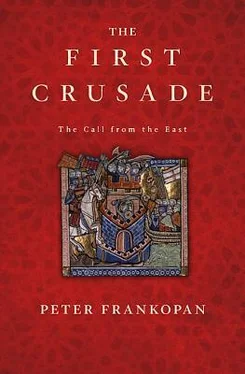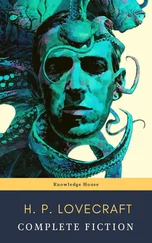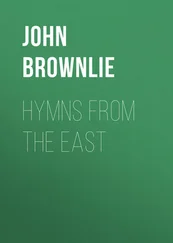In the spring of 1095, Byzantium was in a perilous condition, forced to confront the total failure of its policy in Asia Minor, and bereft of a foothold from which to carve out the recovery of the subcontinent. To the north of the capital, things were little better, with Serbs and Cuman nomads stretching already depleted military resources to the limit. Constantinople all but collapsed under the pressure, with a full-scale mutiny threatening to bring about the emperor’s deposition and murder.
Twelve years later, things could not have looked more different. Nicaea had been restored to imperial authority, while the west coast of Asia Minor and the vital river valleys of the interior were back under Byzantine control. Troublesome figures from the Turkish world had been dealt with once and for all, and a good relationship built with Kilidj Arslan, secured by a peace that had held since the summer of 1098. 84Cilicia and the important ports on the south coast of Anatolia had been recovered. Even the Serbs had been pacified, thanks to a welljudged intervention by Raymond of Toulouse on his way to Constantinople in 1097. And to crown it all Antioch was back in Christian hands, with Byzantine claims over the city established emphatically.
While Tancred’s intransigence after the signing of the treaty of Diabolis in 1108 was galling, it turned out to be a temporary inconvenience. As the experiences of the Crusaders in Jerusalem had shown, the threat posed by the Muslims was not going to diminish. Alexios and Byzantium were key allies, and the knights who had established themselves in the east knew that they needed their support. This was why the chronicler Fulcher of Chartres, chaplain to Baldwin of Bouillon in Edessa and Jerusalem, was careful not to inflame passions. His account of the Crusade is conciliatory throughout towards the emperor; as we have seen, he even chose to excise the inflammatory final paragraph of the letter sent to the Pope in 1098 from Antioch, which accused Alexios of failing to help the Crusaders and of actively seeking to harm them during the expedition. Unlike his peers in the west, Fulcher realised there was little to be gained from antagonising those whose support might be vital in the future. 85Others too were cautious in their appraisals of Alexios and of Byzantium, and deliberately pulled back from the vitriolic assessments of some of their peers. 86
Alexios continued to keep a close eye on the situation in the east. After the death of Raymond of Toulouse in 1105, he sent an embassy to ensure the loyalty and support of his successor in Tripoli, the base where Raymond had established himself at the start of the twelfth century. 87Three years later he took an oath from Bertrand of Toulouse, who journeyed to Constantinople where he received the same treatment the Crusade’s leaders had been given a decade before: an impressive reception, lavish gifts and careful attention by the emperor in person. 88
The benefits that the Crusade brought to Byzantium could be measured in many different ways. A new empire emerged in the twelfth century, strident, self-confident and militaristic, very much in Alexios’ own image. The economy, in tatters at the time of the Komnenoi coup in 1081, was again in bloom, stimulated by the re-coinage of the currency, increased trade with Venice and the other Italian city-states, and of course by the Crusade itself. Expenditure on the army finally stabilised; while Alexios had been in the field almost every year in the first half of his reign, he rarely led the army in person after the passage of the Crusade through imperial territory. By 1107, the empire’s tax system had been completely overhauled, reset on a basis of documented land ownership that gave the state much clearer assessment of – and income from – private property in Byzantium. Stability and prosperity had been restored to the empire.
There is a remarkable poem, written as a guide to John II, the emperor’s heir, around the time of Alexios’ death in 1118. It reviews Alexios’ reign, noting the difficult and turbulent times he faced after taking the throne. But later, all, including ‘the massed movement of horsemen from the west’, yielded before the great ruler, cowering and withdrawing. As long as John II used the same techniques, he too would be able to benefit from his father’s expertise and skill. Money and gifts should be given ‘readily and with a gentle manner’, urged Alexios. The new emperor should stuff gold and presents into the ‘opened jaws’ of westerners and do so unstintingly. To prepare for this, John was urged to accumulate ‘many things’ in strong rooms, ‘so that you may fulfil the greed of the nations who are on the move all around us just as long ago’. In short, the new emperor should therefore treat Constantinople as ‘a fountain of gold’ from which rewards and inducements should be actively and generously distributed. As long as he did so, his reign would be stable. This was a startlingly confident view of the world, based firmly on Alexios’ policies and their success. 89
The poem reflects how robustly the emperor emerged from the Crusade. This can also be seen in how Alexios conducted himself in the later years of his reign. After Henry IV of Germany’s younger son and successor, Henry V, marched on Rome in 1111, taking Pope Paschal II into captivity, Alexios sent embassies to Montecassino to offer his sympathies for the pontiff and the way he had been treated. The emperor was willing to come to Rome in person. To ensure that the city and the papacy were safe in the future, he proposed that either he, or his son John, take the imperial crown of Rome. 90So greatly had the fortunes of Byzantium been transformed as the result of the Crusade that Alexios’ ambitions now extended to taking power in Rome itself.
Persistent misgivings about Byzantium and its emperors cemented themselves in western European consciousness, but it was only when the Second Crusade fell into chaos as it crossed Asia Minor in 1146–7 that these negative portrayals of Alexios began to have an effect. After the German and French armies ran into trouble, the familiar need arose to find a scapegoat for the failure of men who were supposed to be doing God’s work. Blame was laid on the emperor in Constantinople, Manuel I Komnenos, the grandson of Alexios, who became the subject of vicious personal attacks across Europe. The same accusations that had been thrown at his grandfather were now levelled at him: treachery, doubledealing, sympathy with Islam, and betrayal of the defenders of Christianity. There were now calls for a full-blown Crusade against Byzantium itself. The empire’s reputation in the west never recovered. 91
It was also the precise moment when Anna Komnene decided that the time had come to rehabilitate her father’s reputation and to record his achievements. But she faced the difficult problem of how to provide a balanced account of Alexios’ reign. On the one hand, he had saved Byzantium from the jaws of defeat; on the other, he had sown seeds that were to bring a slew of new problems. The resulting text, the Alexiad , is florid, contradictory and pregnant with hidden meanings. It has disorientated, confused and misled people ever since.
When we try to unscramble the erratic sequence of events provided by Anna’s account we see a clear picture. In the mid-1090s, the Byzantine Empire was teetering on the brink of catastrophe. Alexios’ policies in the east had spectacularly failed, while renewed pressure and setbacks to the north of Constantinople threatened what remained of imperial control elsewhere. With imperial finances in tatters, Alexios lacked the resources to engineer a serious fightback in the east, leading to the failure of confidence in his leadership and a full-scale revolt by the entire Byzantine aristocracy.
As Anna Komnene put it, it was one thing to deal with troublesome knights from the west; but ‘the rebellious spirit of his own subjects caused no less trouble – in fact he suspected them even more and hastened to protect himself as best he could, dealing with their plots with skill. But who could possibly describe the ferment of troubles which descended on him? It compelled him to become all things to all men, to accommodate himself as far as he could to the circumstances.’ 92
Читать дальше











